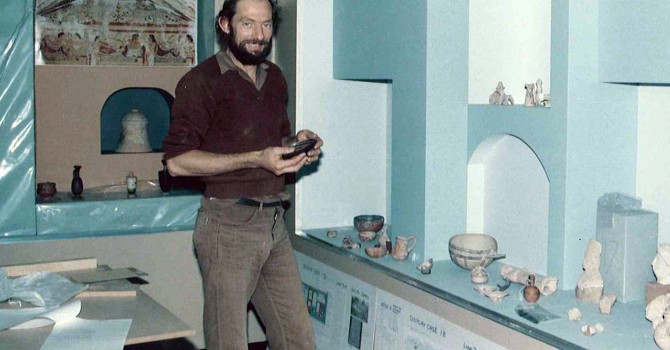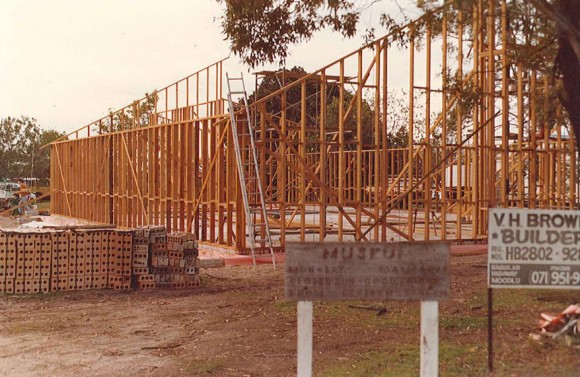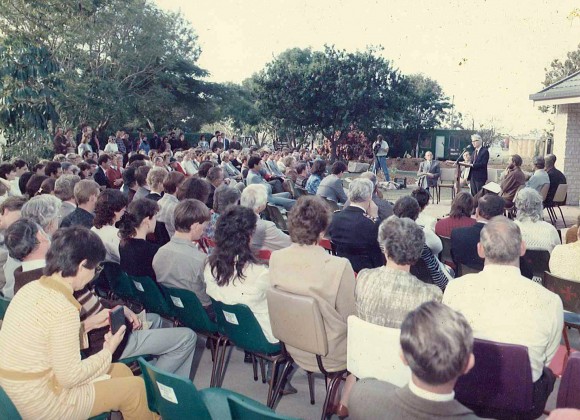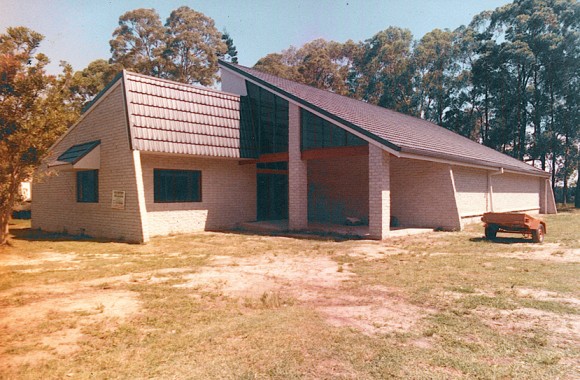Thirty years ago on a warm Saturday afternoon in late June a group of friends, members of the Abbey Community, builders and museum staff gathered with over 100 invited guests to hear the Abbey Museum declared officially open. It was a moving moment: the culmination of more than six years of research, design and fund raising.

There were times when it seemed that the modest design for the gallery would run out of funds and remain an empty shell. Despite the nightmares, remarkably money always came just in time to pay the bills. The Museum team became incredibly inventive in attracting funds and in-kind gifts of materials. At one stage the deputy director of the Queensland Museum (itself nearing completion) remarked to Michael Strong that there were more members of his staff working as volunteers at the Abbey Museum than there were at South Brisbane! Most of the case designs were done with the help of David Bligh and Robert Allen, two senior design artists at the Queensland Museum, and they relished the task of designing a museum without strictures (except finance!).

Business and Government support brings the Abbey Museum to life
The Utah Foundation gave the largest grant in its history to act as a seed fund; work for the dole programs produced two designers to take their concept drawings into actuality, and another grant paid for the screen printed labels. A frantic request went to British museums to help identify enough objects for the displays. This reached a crescendo six months before the scheduled opening, when Catherine Johns, the Keeper of Romano-British Antiquities at the British Museum, dryly commented that while they recognised the importance of the new Abbey Museum, the British Museum did have other responsibilities! But they still kept sending back information which enabled over 1500 labels to be researched and written. Everything was a new learning curve. Michael was heard to mutter “the next museum would be easy after this one!”

On 28 June 1986, as the paint dried on the last mural, Sir Gordon Chalk declared the Museum open. After 47 years, from the beginning of World War II, through nine years in Cyprus, a dangerous voyage through the Suez Canal to Sri Lanka and Sydney, and then to Caboolture, the beautiful priceless objects that once formed John Ward’s innovative museum – the Abbey Folk Park – were again on display and open to the public.


